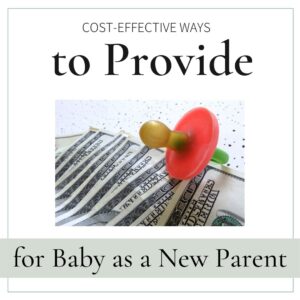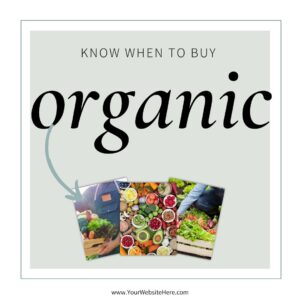Cost effective ways to provide for baby as new parent

Whether you are a parent-to-be or have already started your brood, you likely know that the cost of a child can be rumored to be daunting and unknown. The good news is that raising children doesn’t have to be a big expense. There are many ways parents can save while supporting their little ones. Here begins our first blog of a series focused on cost-effective ways to provide for a baby as a new parent.
When it comes to the most basic and vital resource your children will need, food and formula typically take the cake as one of the costliest and consistent expenses. When it comes to feeding your infant food, there are many ways to save and still satiate your little one’s tummy.
Make food in bulk.
Babies eat. Often. And despite their small bellies, they tend to discard waste as fast as they consume those few ounces of food. In fact, they often will fill their diapers while feeding. That said, they eat little but often, so massive amounts of money (and time) can be wasted on excessive meals gone to waste. Making food in bulk can help with these frequent feedings as a cost-effective way to provide for baby as a new parent.
Here are just a few good rules of thumb when going homemade:
Babies can be at a higher risk for food-borne illness since their immune system is still developing. Be sure your baby’s food is prepared safely with these tips:
- Wash your hands before preparing the food and feeding your baby.
- Avoid cross contamination, especially when handling raw meats.
- Cook meats to recommended temperatures.
- Rinse fruits and vegetables.
- Thin food with breast milk or formula if needed.
- You can store items that contain dairy, eggs, and cooked meat in the refrigerator for up to 24 hours and fruits and vegetables for up to 48 hours. Freeze extra food in child-sized portions and thaw in the microwave when ready to use.
- Always test heated food to make sure it’s cooled enough to feed your baby.
- When introducing a new food, wait one to two days in between servings. If you have a family history of food allergy, talk to your pediatrician.
Benefits of frozen food
Cooking baby food in bulk and freeze portions for months to come. This may look like a day of paying a sitter or childcare provider to watch the little one but places in comparison to the amount saved when you have future meals in just minutes to mouths.
How simple can it be? Consider that those convenient 4oz. fruit and vegetable pouches that start at around $1.25 per pouch can be made at home with the same simple, whole food ingredients mashed at home for about $.50 per serving! So basically, you are saving $.75 for every single portion you make! What’s more, you can couple this cooking with what you were already planning on making for dinner. Just double or triple the portion size and set aside what is going to be baby food, frozen for later.
Use what you already have as a cost-effective way to provide for baby as a new parent.
All too often we rely on the baby aisle to provide what we think Baby needs. But the truth is that their stomachs can handle much of what ours can, just in smaller and safer portions. Consider using what you have on hand to feed Baby, rather than making an entirely different meal plan for them. With the exception of some seasonings and spices, there are plenty of baby-friendly dishes that can be served to the whole lot come mealtime.

For example, take Taco Tuesday and simply “deconstruct” the tacos for your babe. That is, serve all the little parts (meat, tortilla/bread, shredded cheese, diced veggies) separately. This will make it easier for your baby to eat. The same can be done with sandwiches at lunch time. Use a rolling pin to flatten the bread, making a little “mini sandwich.”
Know when to buy organic.
Obviously, we all want our children to grow up with the best nutrition possible. That said, organic tends to be a desirable option for our babies and their sensitive bodies. There are ways to get organic food for less. Here are just a few of our favorite go-to-tips for saving on sustainably grown produce.
- Buy from your local farmers markets. Baby will enjoy the day out and you’ll get good food for less while supporting local!
- Join a co-op. A food co-op is essentially a grocery store that’s owned by the people who shop there. Members get to decide what foods and products are stocked on the shelves, where those items are purchased and what quality standards both products and vendors have to meet.
- Shop in season. Fruits and veggies cost less when they are in season since they are easier to grow, plus will have their most nutrient value during peak times.
- Always comparison shop. Don’t be afraid to bust out the coupons. Nowadays, digital coupons make it even easier to simply snap a pic, grab the goods and automatically deduct at checkout with your linked phone number.
- Create your meal plan around the most affordable produce, meats and sales items. Back to those coupons and weekly ads. Get ideas based off what’s on sale!
- Opt for the clean 15 and go organic with the Dirty Dozen. The Environmental Working Group releases its annual Shoppers Guide to Pesticides in Produce, also known as the Dirty Dozen and Clean Fifteen each year. If you care to shop organic, choose to buy organic when it is one of the more common pesticide-ridden produce options. Then, save by buying the clean 15 in non-organic. A list of the EWG’s most recent list for 2020 can be found here.
Keeping pouches for back up or when you’re on the go is a cost-effective way to provide for baby.
Pouches are definitely convenient and have their own benefit when it comes to last-minute feeding sessions. Rather than stopping at a fast-food location and settling for a large kids’ meal that is costly and outside of your desired dietary needs for Baby, have pouches handy instead. Now a $1.25 pouch saves the day and your wallet from a kids’ meal three times as much with far fewer nutrients.
Eating out
Once baby arrives, it can be tempting to depend on dining out and drive-thrus to prepare your meals for you. (And we don’t blame you!) However, dining out can definitely break the bank, especially when you’re now paying for kids’ meals. According to recent statistics from the U.S. Department of Agriculture (USDA), the cost of raising kids averages $12,980 annually, per child, for a middle-income family. And food is a huge budget buster, second only to housing.
Don’t bite off more than you can chew! Simply opt for doing things a better way! Here are more cost-effective ways to provide for baby as a new parent when dining out.
- Split meals with your kiddos. Shave $5 to $7 off your restaurant bill by simply sharing your meal with your little one.
- Opt for a kids’ meal yourself. That’s right! If the establishment allows, save nearly half while still getting restaurant portions, which are adequate amounts for even grownups like yourself.
- Skip the entrée and feast on an appetizer instead!
- Take advantage of slow weekdays where Kids Eat Free! Check with your local restaurants or blogs in your area highlighting who offers this and what days of the week.
- Genuinely ask yourself if it is worth eating out. Factor in the time it takes to commute, wait for seating and service, and tip all before jumping to the conclusion that dining out is less expensive or more convenient.
At Two Sense Consulting, we know that your two greatest resources are time and money. We hope that the above list and continued series helps parents alike save and spend wisely when it comes to all things parenting. Have suggestions or requests for ways to save more of your precious resources? Give us a call and book your FREE CONSULTATION to see how outsourcing can help your quality of life!







